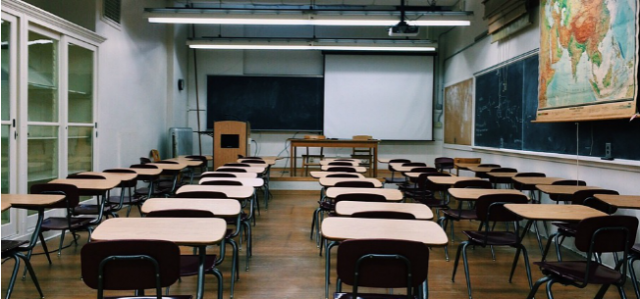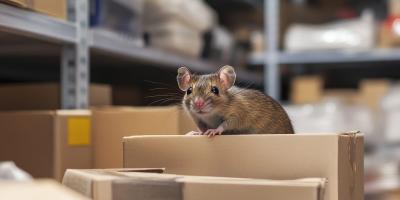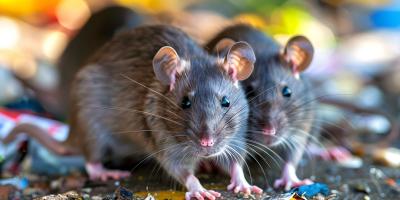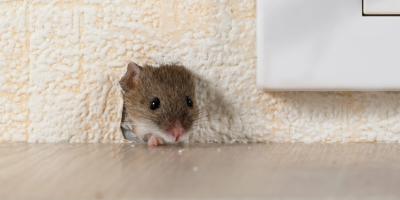Tips To Keep Pests Out Of Schools During Summer Break

The school year may be over, and students may be headed home for summer break - but that doesn’t necessarily mean your hallways will remain empty until fall.
The truth is, almost all schools will face pest problems at some point, regardless of location, grade levels, or climate. One thing, however, is universal: the need to keep schools free from pests through the summer is undeniable, and should be a primary goal for all school administrators headed into the vacation season.
The Biggest Dangers Of Pest Infestations in Schools
A school should be a haven of learning and growth for young students - not a space where they should have to worry about sickness or contamination from a pest infestation.
Pests like cockroaches, rodents, bed bugs, and others can easily spread pathogens to those who come in contact with them or their nesting sites. This can pose a serious threat to students when they return to school in the fall.
Other common issues, including everything from termites and ants to mold and fungi, can also pose a physical threat to the school itself. By infesting wood, ceilings, walls, and other vulnerable spaces, these pests increase the likelihood of destruction that can lead to student injury.
Where To Watch For Pests In Schools
In almost all cases, pests come into school buildings looking for three key resources: food, water, and a quiet space to build a nest. By working to keep them from finding any of these, you drastically decrease your chances of suffering from a pest infestation.
Some of the most common pest-attracting areas in schools include:
- Cafeterias - especially food preparation areas and dining areas, where food crumbs and standing water are most likely to be found;
- Dumpsters & trash areas - where food scraps are most likely to be found, and where pests can typically set up a nest relatively undisturbed;
- Lockers - be sure to keep lockers thoroughly cleaned and free of any food remnants during summer break; otherwise, they may provide the perfect hiding spot for any number of pests;
- Classrooms - students spend most of their days here, so any pests they may bring from home can easily find a hiding place here and wait until students return from break to spread further;
- Gymnasium and changing rooms - these areas are most likely to have standing water around the showers or changing areas, and easy outdoor access makes it easy for pests to find their way inside;
- Athletic Fields & Playgrounds - because these outdoor spaces are most likely to draw pests, it’s critical to not allow infestations to simply start outdoors and make their way inside at the first opportunity;
- Buses - particularly high-traffic buses can be a quick way for pests to transfer from student homes to the school itself, or to other students on the same route, especially if food is present on the bus.
Common Pests Problems Faced by Schools
The exact type of pest problem a school may encounter has a lot to do with the age of the building, its location, and the condition of the surrounding neighborhood.
In general, however, most schools should prepare to face the following most common pests:
- Ants
- Bed Bugs
- Beetles
- Bees, Hornets, & Wasps
- Cockroaches
- Flies
- Lice
- Millipedes & Centipedes
- Mosquitoes
- Rodents
- Termites
- Ticks
Many of these common pests will leave behind traces of their occupation - rodent droppings, for example, or carcasses from cockroaches and other insects left around their most popular hiding places. Be sure to check for these warning signs early and often to catch any invaders before they get settled.
Keep in mind, pests aren't afraid to share the space - meaning you may face several or more of these pests at the same time. That’s why an integrated pest management strategy is best, to help cast the widest net to prevent all potential pests from getting settled in your school.
5 Tips For Keeping Schools Pest-Free Through The Summer
- Be sure all lockers, eating areas, and classrooms are completely cleared of garbage and any food waste - otherwise, these spaces will be highly-attractive to pests of all sizes;
- Ensure all school entrances are in good condition, and that there are no openings or cracks in windows or doors through which pests can enter during the summer;
- Keep athletic fields, playground, and outdoor areas well-maintained and clean throughout the summer, preventing pests from setting up an outdoor base from which to enter the school;
- Carefully inspect other possible entrance points around the building - including ventilation, roof shingles, and around the foundation - for possible damage that could act as entrance points for determined pests;
- Because paper can be a major attractant for pests like cockroaches, ants, and rodents - as well as contaminants like mold and fungi - be sure all books and paper supplies are securely stored out of reach throughout the summer.
Keep Your School A Refuge For Learning - Not For Pests
Even a single pest infestation can do serious damage to the bond of trust between a school and its students. The presence of pests can lead to sickened students, damaged materials, and a general degradation of the overall learning environment - none of which make for a very successful start of the school year.
Whether you’ve dealt with pest problems in your school before or you’re looking for a solution to prevent pests from finding their way inside, an Integrated Pest Management strategy can help identify key vulnerabilities in your pest prevention strategy before pests have had a chance to get settled.
By working with an experienced pest professional, you can ensure your Integrated Pest Management strategy is up and running through the summer break and well into the next school year.



